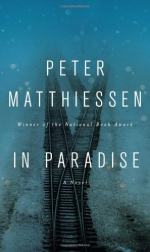
|
| Name: _________________________ | Period: ___________________ |
This test consists of 15 multiple choice questions and 5 short answer questions.
Multiple Choice Questions
1. For how many years does Malan say he was held prisoner at Auschwitz in Part III: “Dancing at Auschwitz,” Chapter 13?
(a) 3.
(b) 7.
(c) 4.
(d) 5.
2. Where is Dr. Stern said to be from in Part II: “In the Ogre’s Cave,” Chapter 6?
(a) France.
(b) Norway.
(c) Sweden.
(d) Greenland.
3. Where does the bus drop off G. Earwig in the opening of Part IV: “In Paradise,” Chapter 16?
(a) At a hotel.
(b) At the train station.
(c) At the cathedral.
(d) At the airport.
4. When was Josef Mengele born?
(a) 1892.
(b) 1911.
(c) 1926.
(d) 1889.
5. Who questions whether Beethoven’s joy in Ode to Joy is indicative of transcendence in Part IV: “In Paradise,” Chapter 16?
(a) Rainer.
(b) Rabbi Dan.
(c) Rabbi Glock.
(d) Hanz Frank.
6. When was Tadeusz Borowski transported from Auschwitz to the Dautmergen subcamp of Natzweiler-Struthof?
(a) 1941.
(b) 1944.
(c) 1945.
(d) 1939.
7. What museum does Olin visit in Part IV: “In Paradise,” Chapter 16?
(a) The Czartoryski Museum.
(b) The Musée du Louvre.
(c) The National Gallery in Prague.
(d) The Metropolitan Museum of Art.
8. Who first approaches Clements Olin in the mess hall to ask if he’s okay in the beginning of Part III: “Dancing at Auschwitz,” Chapter 11?
(a) Sister Ann-Marie.
(b) Rebecca.
(c) Father Mikal.
(d) Eva.
9. Who stands against the “diabolical” concept of dancing at Auschwitz and condemns those who danced, regardless of the fact that he’d joined in, in Part III: “Dancing at Auschwitz,” Chapter 11?
(a) Father Mikal.
(b) Rabbi Glock.
(c) G. Earwig.
(d) Rabbi Dan.
10. What is the name of the priest that accompanies the two Catholic novices at the retreat?
(a) Father David.
(b) Father Thompson.
(c) Father James.
(d) Father Mikal.
11. How old does the narrator say Tadeusz Borowski was in 1948 when his death camp narrative made him famous, in Part III: “Dancing at Auschwitz,” Chapter 13?
(a) 25.
(b) 33.
(c) 35.
(d) 29.
12. When did Aleksandr Solzhenitsyn win the Nobel Prize in Literature?
(a) 1970.
(b) 1981.
(c) 1992.
(d) 1962.
13. The excommunicated monk Stefan’s priory is in the region of what notorious death camp north of Warsaw, according to the narrator in Part II: “In the Ogre’s Cave,” Chapter 7?
(a) Treblinka.
(b) Kasimierz.
(c) Lublin.
(d) Szlachta.
14. What is the name of the younger Catholic novice on the retreat?
(a) Sister Maria.
(b) Sister Catherine.
(c) Sister Ann-Marie.
(d) Sister Angela.
15. What word from Part II: “In the Ogre’s Cave,” Chapter 6 means characterized by bitter or scornful derision?
(a) Ecumenical.
(b) Pedantic.
(c) Sardonic.
(d) Pernicious.
Short Answer Questions
1. Who does Olin describe in Part IV: “In Paradise,” Chapter 16 as having “celebrated that vital joy in his atavistic impulse to devour the raw heart of a deer that is slain bare-handed”?
2. How many digits make up Malan’s prison number from Auschwitz?
3. Where was Josef Mengele located at the time of his death?
4. In what year did Josef Mengele join the Nazi Party?
5. When was Aleksandr Solzhenitsyn born?
|
This section contains 440 words (approx. 2 pages at 300 words per page) |

|




